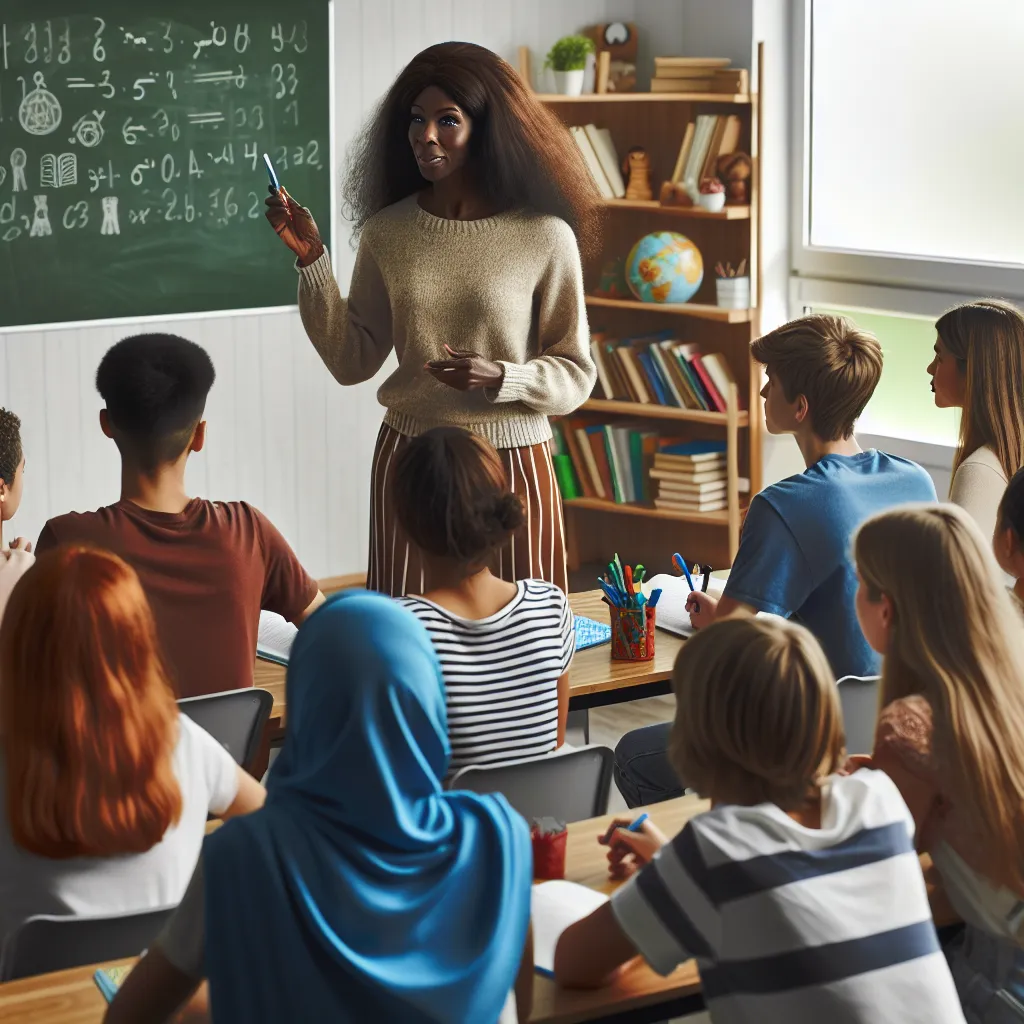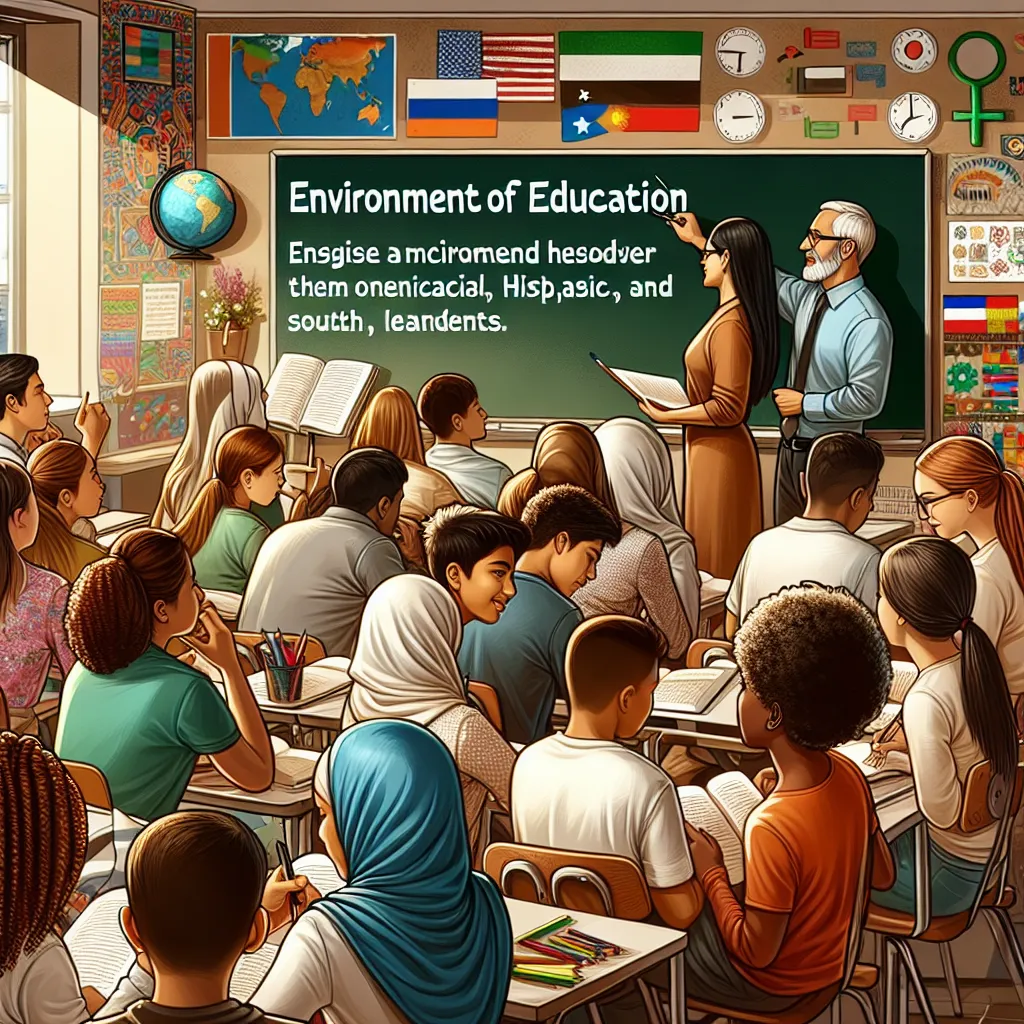Ask AI on The Internet
Question: QUESTION 1 Read the extract below and answer the questions that follow. MAPHUNGUBWE CULTURAL LANDSCAPE The ancient city of Mapungubwe (meaning “hill of the jackal”) is an Iron Age archaeological site in the Limpopo province on the border between South Africa, Zimbabwe and Botswana, 75 km from Messina. It sits close to the point where the Limpopo and Shashe Rivers meet. One thousand years ago, Mapungubwe appears to have been the centre of the largest known kingdom in the African sub-continent. The civilization thrived as a sophisticated trading centre from around 1200 to 1300 AD, trading gold and ivory with China, India and Egypt. The site was “discovered” on 31 December 1932, when a local informant, Mowena, led E.S.J. van Graan (farmer and prospector), his son and three others to Greefswald farm on Mapungubwe Hill. On the hill, they noticed stone walls and on closer inspection, they recovered gold and iron artifacts, pottery and glass beads. Van Graan's son recognised the academic value of the site and contacted the head of the Department of History at the University of Pretoria, Professor Leo Fouché. As a result of his intervention, the University negotiated with the owner of the property, E.E. Collins. In a legal agreement, the University took ownership of the gold and other artifacts and secured an option and a contract for excavation rights. The University also successfully requested a postponement of prospecting, mining and related activities on Greefswald. In June 1933, Greefswald was bought by the Government and excavation rights were granted to the University of Pretoria. The University established an Archaeological Committee, which from 1933 to 1947 oversaw research and excavations (read more about the excavations). Mapungubwe Hill is 300 m long, broad at one end, tapering at the other. It is only accessible by means of two very steep and narrow paths that twist their way to the summit, and yet 2 000 tons of soil have been artificially transported to the very top by a prehistoric people of unknown identity. CUS3701 ASSESSMENT 03/2024 Archaeological enquiry uncovered the remnants of numerous dwellings, which had been built on the ruins of predecessors over many generations, resulting in a series of habitation phases. Radiocarbon dates show that the first buildings were erected below the hill at the beginning of the 11th century AD. But adjacent to Mapungubwe is the sister site of Bambandyanalo, which was settled even earlier. It seems that the centre of the state shifted from Bambandyanalo to Mapungubwe Hill in about 1045 AD, when the town most probably became overcrowded. It was also at about this time that hills and mountains became associated with royalty and the noble classes began to build their structure on high ground. This is an important observation as it provided evidence of the extensive wealth and social differentiation of the people of Mapungubwe; in other words, this ancient civilization was class based. The gold findings are also evidence of early gold smelting. A large number of artifacts from the royal family were discovered at Mapungubwe. The best known of these objects is the golden rhinoceros. All in all, the amount of gold from this burial amounted to 7 503 ounces. Greefswald farm remained the property of the State from the 1930s. Management of the farm was taken over by the provincial Department of Nature Conservation in 1992 and control was transferred to SANParks in 1999. Mapungubwe was declared a World Heritage Site by the United Nations Educational, Scientific and Cultural Organisation (UNESCO) in July 2003. 1.1 Write down the following: • The grade you are going to teach this lesson to. • The teaching strategy or strategies that you will use. 1.2 Design a class test with 10 questions. • The test must count 20 marks. • The questions must meet the criteria for good questioning. • The questions must be set at a variety of the Bloom’s taxonomy levels according to the CAPS requirements. • Only one reproductive (lower order) question may be asked. • Indicate each time on which level of Bloom’s taxonomy the question lies. CUS3701 ASSESSMENT 03/2024 • Compile a memorandum, and mark allocation should be indicated. [20] QUESTION 2 2.1 Explain the difference between formative assessment and summative assessment. Give one example for each and include the assessment tool that will be used, for example, self-assessment or group assessment. (6) 2.2 How can teachers understand what makes one assessment good and another bad? (2) 2.3 How do you make choices about what type of assessment to use in your teaching? (2) NB: Explain in your own words; do not copy everything from the textbook. [10] QUESTION 3 In every assessment task, the assessment criteria should be aligned to the learning outcomes. 3.1 Discuss the implications of aligning learning outcomes with assessment criteria on learners. Your answer should be in the form of an essay (introduction, body and conclusion), making use of examples from your own subject. CUS3701 ASSESSMENT 03/2024 QUESTION 4 White Paper 6 defines inclusive education inter alia as maximising the participation of all learners in the culture and the curriculum of education institutions and uncovering and minimising barriers to learning. 4.1 In an essay (introduction, body and conclusion), discuss your understanding of barriers to learning and how you will make sure that you address barriers to learning in your specific subject. Assessment criteria We will be assessing the following in your answer: • Discuss the concept ‘barriers to learning’ (don’t copy the textbook word by word). (10) • Elaborate on the goals of White Paper 6. (10) • Address barriers to learning and indicate with YOUR OWN EXAMPLES how you will create a supportive environment and choose assessment tasks to overcome barriers to learning. (10) [30] QUESTION 5 Being a teacher at any level requires a significant amount of knowledge and skill. Paying attention to the core competencies for teachers helps to ensure that all teachers working in a school environment are prepared to make school a positive experience for learners and their families. 5.1 Write an essay in response to the statement above. The essay must contain an introduction, a body and a conclusion. You are required to do research and write a CUS3701 ASSESSMENT 03/2024 detailed discussion in your own words. Note that you will not earn marks for simply copying from the textbook or plagiarising (using more than 30%? of the direct words) from any other source. [30]
### QUESTION 1 **1.1 Write Down the Following:** - **Grade:** Grade 7 - **Teaching Strategy:** * **Discussion-based learning:** Encourage students to discuss key elements of the Mapungubwe Cultural Landscape. * **Inquiry-based learning:** Encourage students to ask questions and explore the answers through research. * **Multimedia Resources:** Use pictures, videos, and maps to visualize the archaeological site and its significance. **1.2 Design a Class Test with 10 Questions (20 marks)** --- **Class Test: Mapungubwe Cultural Landscape** **Total Marks: 20** --- **Question 1:** (Remembering - Bloom's Level 1) - **(1 mark)** * What is the meaning of the name Mapungubwe? * **Answer:** "Hill of the jackal." **Question 2:** (Understanding - Bloom's Level 2) - **(2 marks)** * Describe the location of Mapungubwe. * **Answer:** It is an Iron Age archaeological site in Limpopo province on the border between South Africa, Zimbabwe, and Botswana, near the confluence of the Limpopo and Shashe Rivers. **Question 3:** (Applying - Bloom's Level 3) - **(2 marks)** * How did the discovery of Mapungubwe contribute to our understanding of African civilizations? * **Answer:** It provided evidence of a sophisticated trading center and an ancient civilization that operated a class-based society, trading gold and ivory with China, India, and Egypt. **Question 4:** (Analyzing - Bloom's Level 4) - **(3 marks)** * Analyze why hills and mountains became associated with royalty and noble classes at Mapungubwe. * **Answer:** Hills and mountains symbolized power and exclusivity, which was essential for establishing a class-based society and differentiating the nobility from commoners. **Question 5:** (Evaluating - Bloom's Level 5) - **(4 marks)** * Evaluate the significance of the Mapungubwe Cultural Landscape being declared a UNESCO World Heritage Site. * **Answer:** It highlights the site's global importance, aiding in its preservation and recognition of its historical and cultural significance, leading to increased tourism and academic interest. **Question 6:** (Creating - Bloom's Level 6) - **(4 marks)** * Design a poster that could be used to raise awareness about the importance of preserving Mapungubwe. * **Answer:** (Students will present a drawn poster with key components such as historical significance, UNESCO status, and images or drawings representing the site.) **Question 7:** (Understanding - Bloom's Level 2) - **(2 marks)** * Explain the significance of the golden rhinoceros artifact found at Mapungubwe. * **Answer:** It is the best-known object found, symbolizing the wealth and craftsmanship of the royal family, and an indication of early gold-smelting activities. **Question 8:** (Applying - Bloom's Level 3) - **(2 marks)** * How did the University of Pretoria become involved in the excavation of Mapungubwe? * **Answer:** The site’s academic value was recognized by Van Graan's son, leading to contact with Professor Leo Fouché, resulting in legal agreements for artifact ownership and excavation rights. **Question 9:** (Analyzing - Bloom's Level 4) - **(3 marks)** * Discuss the process and challenges of excavating Mapungubwe Hill. * **Answer:** The hill is only accessible by steep and narrow paths, requiring careful transportation of 2000 tons of soil to the summit by prehistoric people, challenging archaeologists in their excavation efforts. **Question 10:** (Evaluating - Bloom's Level 5) - **(4 marks)** * Evaluate the potential impact of mining and related activities on the Greefswald site before it was managed by the provincial Department of Nature Conservation. * **Answer:** Mining could have led to irreversible damage to the archaeological site, loss of artifacts, and historical data which are crucial for understanding our heritage. --- **Memorandum:** 1. **(1 mark):** "hill of the jackal." 2. **(2 marks):** Iron Age site in Limpopo, near the confluence of the Limpopo and Shashe Rivers. 3. **(2 marks):** Sophisticated trading center, class-based society, trading relationships with China, India, and Egypt. 4. **(3 marks):** Power and exclusivity symbolism, differentiation between nobility and commoners. 5. **(4 marks):** Highlights global importance, preservation, academic interest, tourism. 6. **(4 marks):** (Poster with historical significance, UNESCO status, images representing the site). 7. **(2 marks):** Symbol of wealth, craftsmanship, early gold-smelting. 8. **(2 marks):** Recognized academic value, contacted Professor Fouché, legal agreements. 9. **(3 marks):** Steep paths, 2000 tons of soil transportation, archaeological challenges. 10. **(4 marks):** Potential damage, loss of artifacts and historical data. --- ### QUESTION 2 **2.1 Explain the difference between formative assessment and summative assessment. Give one example for each and include the assessment tool that will be used, for example, self-assessment or group assessment. (6)** - **Formative Assessment:** Ongoing assessments to monitor student learning and provide ongoing feedback. * **Example:** Weekly quizzes to gauge understanding. * **Assessment Tool:** Self-assessment. - **Summative Assessment:** Evaluation at the end of an instructional period to measure students' learning. * **Example:** End-of-term exam. * **Assessment Tool:** Group assessment. **2.2 How can teachers understand what makes one assessment good and another bad? (2)** - **Answer:** Teachers can discern the quality of assessments by evaluating their alignment with learning objectives, clarity, fairness, reliability, and validity. **2.3 How do you make choices about what type of assessment to use in your teaching? (2)** - **Answer:** I choose assessment types based on the learning objectives, the skills being evaluated, and the need for either formative feedback or summative evaluation. ### QUESTION 3 **3.1 Essay: Aligning Learning Outcomes with Assessment Criteria** --- **Introduction** In education, aligning learning outcomes with assessment criteria is critical for effective teaching and learning. This alignment ensures that the assessments accurately measure whether students have achieved the desired learning outcomes. **Body** Aligning learning outcomes with assessment criteria has profound implications for learners. Firstly, it provides clear expectations for students, guiding them on what is important to learn. For example, in a history class, if the learning outcome is to understand the significance of historical sites like Mapungubwe, the assessment criteria should include recognizing its location, historical importance, and contribution to understanding ancient civilizations. Secondly, aligned assessments offer a sense of fairness. When students know their assessments are directly linked to what they have learned, they perceive the evaluation as just and relevant. This perception can enhance their motivation and engagement. For example, if a history test focuses on Mapungubwe's discovery, its trade connections, and archaeological findings, students are more likely to see the relevance of their studies. Moreover, such alignment ensures comprehensive coverage of the curriculum. Teachers are less likely to overlook important areas if the assessment criteria are tied to learning outcomes. This comprehensive coverage supports diverse learning needs and aids in developing thorough knowledge. Lastly, alignment encourages a focus on higher-order thinking skills. For instance, in a history lesson on Mapungubwe, students might be asked to evaluate its significance as a UNESCO World Heritage site, encouraging analysis and critical thinking beyond mere recall of facts. **Conclusion** Aligning learning outcomes with assessment criteria shapes a supportive educational environment where expectations are clear, fair, and comprehensive. It fosters higher-order thinking and ensures that assessments measure what they intend to, ultimately enhancing learning outcomes for students. --- ### QUESTION 4 **4.1 Essay: Understanding Barriers to Learning and Addressing Them** --- **Introduction** Inclusive education is designed to maximize the participation of all learners and minimize barriers to learning. Understanding and addressing these barriers are crucial for creating supportive and effective learning environments. **Body** **Concept of Barriers to Learning** Barriers to learning are obstacles that prevent students from accessing quality education. These can be physical, emotional, cognitive, or social. Physical barriers may include disabilities; cognitive barriers might involve learning difficulties; emotional barriers could relate to trauma or anxiety; and social barriers may stem from socio-economic challenges or cultural differences. **Goals of White Paper 6** White Paper 6 aims to develop an inclusive education system that provides equal opportunities for all learners. It focuses on identifying and addressing barriers to learning, promoting flexible curricula, and ensuring that support services are available. This policy also aims to foster collaboration between schools, families, and communities, and emphasizes the importance of teacher training to handle diverse learning needs. **Addressing Barriers to Learning** To address barriers in history teaching, creating a supportive environment is essential. For example, providing visual aids and hands-on activities for students with cognitive barriers can aid comprehension. For physical barriers, ensuring that classrooms are wheelchair accessible and equipped with assistive technologies can facilitate learning. Emotional support can be provided through counseling services and peer support programs. Assessment tasks should be designed to be inclusive. For instance, offering multiple formats for assessments—like oral presentations, written reports, or visual projects—can accommodate different learning styles and needs. Using differentiated instruction tailored to individual student's strengths and challenges can help to minimize barriers. **Conclusion** Barriers to learning are multifaceted and require comprehensive strategies to address. By understanding these barriers and implementing inclusive practices as outlined in White Paper 6, educators can create supportive environments that cater to all learners, ensuring their success and engagement in the educational process. --- ### QUESTION 5 **5.1 Essay: Core Competencies for Teachers** --- **Introduction** Being a teacher involves a complex mix of knowledge, skills, and competencies that are essential for creating a positive and effective learning environment. Paying attention to these core competencies ensures that teachers are well-prepared to meet the diverse needs of their students. **Body** **Subject Knowledge** First and foremost, teachers must have thorough subject knowledge. This depth of understanding allows them to explain concepts clearly and answer students' questions confidently. For example, a history teacher must deeply understand historical events, their contexts, and implications to teach effectively. **Pedagogical Skills** Effective teaching also requires strong pedagogical skills. This includes lesson planning, classroom management, and the ability to use various teaching strategies to accommodate different learning styles. For instance, integrating discussion-based learning, inquiry-based learning, and multimedia resources can make lessons more engaging and accessible. **Assessment Competency** Teachers need to be competent in designing and delivering assessments. This involves creating fair, valid, and reliable assessments that align with learning objectives. Understanding both formative and summative assessment methods and knowing when to apply each is critical. **Communication and Interpersonal Skills** Excellent communication skills are essential for teachers to convey information effectively and build relationships with students, parents, and colleagues. Interpersonal skills help in understanding and addressing the needs of students, creating a supportive and inclusive classroom culture. **Professional Development** Continuous professional development is crucial for teachers to stay updated with new teaching methodologies, educational research, and technological advancements. Engaging in workshops, further studies, and peer collaboration ensures that teachers remain competent and effective in their roles. **Adaptability and Problem-solving** The classroom is a dynamic environment, and teachers must be flexible and creative in their approaches. Adaptability and problem-solving skills enable teachers to handle unexpected situations and diverse classroom challenges efficiently. **Conclusion** Core competencies in subject knowledge, pedagogical skills, assessment competency, communication, professional development, and adaptability are crucial for teachers. These skills ensure that teachers can provide a supportive and enriching learning experience, making a positive impact on their students' educational journey. ---
Think your answer is better than the AI's? Post it below.
Other Most Relevant Posts:
 # Tutorial Letter: Assignment 05 - Incl. Education Approaches (IEA1501)
# Declaration of Honesty
# Assignment 05 Questions
# Inclusive Pedagogical Approaches
# Teaching Strategies for Incl. E
# Tutorial Letter: Assignment 05 - Incl. Education Approaches (IEA1501)
# Declaration of Honesty
# Assignment 05 Questions
# Inclusive Pedagogical Approaches
# Teaching Strategies for Incl. E
 1. Inclusive Education
2. Transformative Teacher
3. Special School
4. Barriers to Learning
5. Social Isolation
Recognizing Individual Needs
Building a Supportive Classroom Culture
Providing Diff
1. Inclusive Education
2. Transformative Teacher
3. Special School
4. Barriers to Learning
5. Social Isolation
Recognizing Individual Needs
Building a Supportive Classroom Culture
Providing Diff
Question Tags
If you want your question answered by an AI, click here.





Post your own comment: